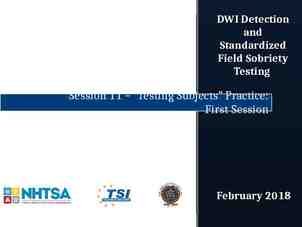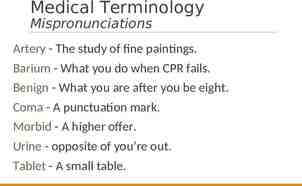Slideshow Project DOI:10.1682/JRRD.2013.10.0226JSP Elevated liver
5 Slides515.00 KB

Slideshow Project DOI:10.1682/JRRD.2013.10.0226JSP Elevated liver enzymes following polytraumatic injury Aaron Fox, MD; James B. Sanderlin, MD; Shane McNamee, MD; Jasmohan S. Bajaj, MD; William Carne, PhD; David X. Cifu, MD This article and any supplementary material should be cited as follows: Fox A, Sanderlin JB, McNamee S, Bajaj JS, Carne W, Cifu DX. Elevated liver enzymes following polytraumatic injury. J Rehabil Res Dev. 2014;51(6):869–74. http://dx.doi.org/10.1682/JRRD.2013.10.0226

Slideshow Project DOI:10.1682/JRRD.2013.10.0226JSP Aim – Describe and examine factors associated with mild liver enzyme elevations in patients with traumatic brain injury (TBI). Relevance – This information may help clinicians evaluate and manage individuals with TBI found to have elevated liver enzymes. This article and any supplementary material should be cited as follows: Fox A, Sanderlin JB, McNamee S, Bajaj JS, Carne W, Cifu DX. Elevated liver enzymes following polytraumatic injury. J Rehabil Res Dev. 2014;51(6):869–74. http://dx.doi.org/10.1682/JRRD.2013.10.0226

Method Slideshow Project DOI:10.1682/JRRD.2013.10.0226JSP Participants were servicemembers with TBI admitted to Hunter Holmes McGuire VA Medical Center Polytrauma Rehabilitation Center. – January 2008 through December 2011. We retrospectively analyzed and categorized patients based on alanine aminotransferase (ALT) values (above or below 44 IU/L) on initial labs. This article and any supplementary material should be cited as follows: Fox A, Sanderlin JB, McNamee S, Bajaj JS, Carne W, Cifu DX. Elevated liver enzymes following polytraumatic injury. J Rehabil Res Dev. 2014;51(6):869–74. http://dx.doi.org/10.1682/JRRD.2013.10.0226

Results Slideshow Project DOI:10.1682/JRRD.2013.10.0226JSP Of 121 subjects, 59 (49%) had ALT 44 IU/L. No significant differences between groups with regard to sex, military status, race, theater, TBI mechanism, severity of TBI, or concomitant injuries. Regardless of demographics, mechanism of injury, or extent of trauma, elevated liver enzymes were common. – Enzymes typically returned to normal with conservative management. – No specific etiology was defined in most cases. This article and any supplementary material should be cited as follows: Fox A, Sanderlin JB, McNamee S, Bajaj JS, Carne W, Cifu DX. Elevated liver enzymes following polytraumatic injury. J Rehabil Res Dev. 2014;51(6):869–74. http://dx.doi.org/10.1682/JRRD.2013.10.0226

Conclusion Slideshow Project DOI:10.1682/JRRD.2013.10.0226JSP Further analysis will be performed to determine most efficient way to monitor these patients so that unnecessary tests are avoided and medical expenses are minimized. This article and any supplementary material should be cited as follows: Fox A, Sanderlin JB, McNamee S, Bajaj JS, Carne W, Cifu DX. Elevated liver enzymes following polytraumatic injury. J Rehabil Res Dev. 2014;51(6):869–74. http://dx.doi.org/10.1682/JRRD.2013.10.0226






